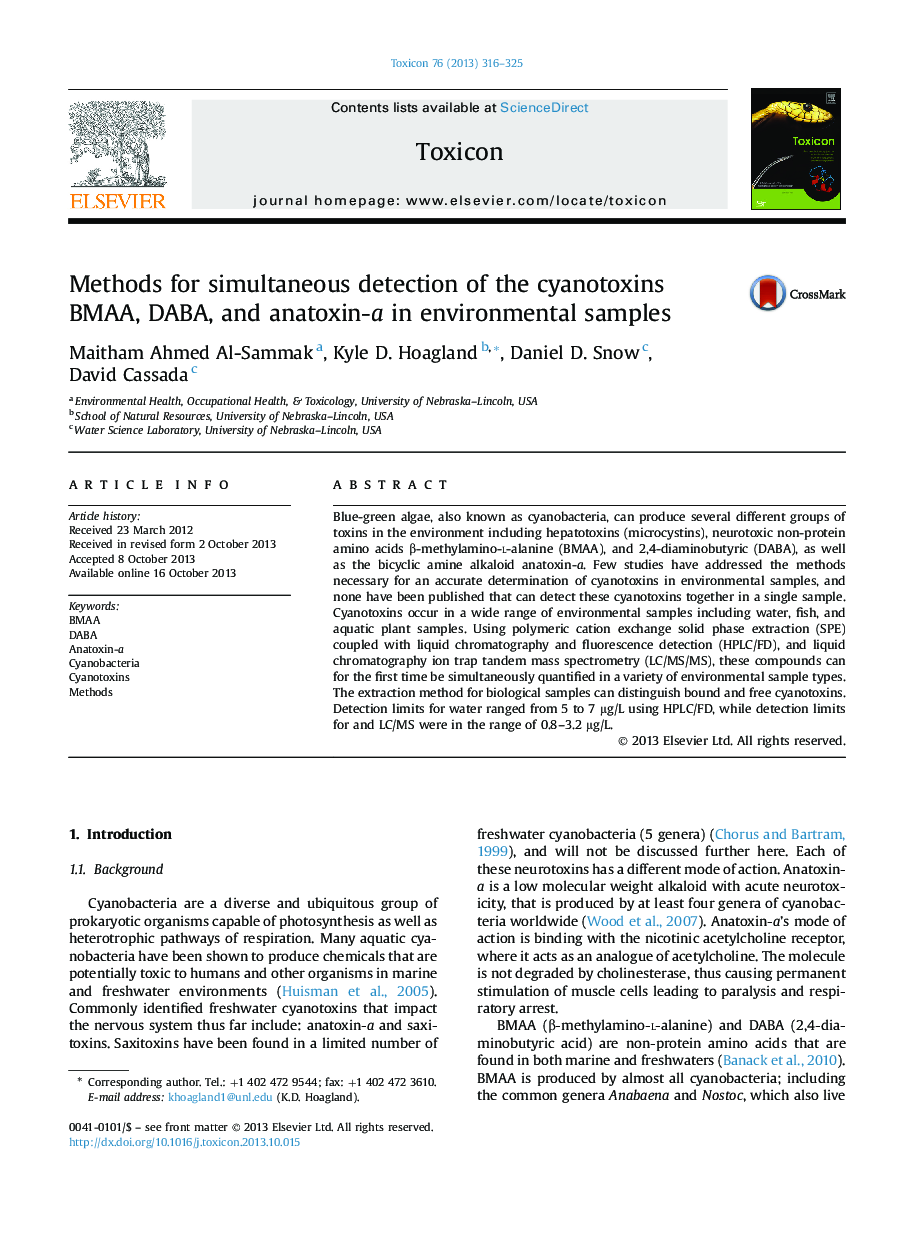| Article ID | Journal | Published Year | Pages | File Type |
|---|---|---|---|---|
| 8397160 | Toxicon | 2013 | 10 Pages |
Abstract
Blue-green algae, also known as cyanobacteria, can produce several different groups of toxins in the environment including hepatotoxins (microcystins), neurotoxic non-protein amino acids β-methylamino-l-alanine (BMAA), and 2,4-diaminobutyric (DABA), as well as the bicyclic amine alkaloid anatoxin-a. Few studies have addressed the methods necessary for an accurate determination of cyanotoxins in environmental samples, and none have been published that can detect these cyanotoxins together in a single sample. Cyanotoxins occur in a wide range of environmental samples including water, fish, and aquatic plant samples. Using polymeric cation exchange solid phase extraction (SPE) coupled with liquid chromatography and fluorescence detection (HPLC/FD), and liquid chromatography ion trap tandem mass spectrometry (LC/MS/MS), these compounds can for the first time be simultaneously quantified in a variety of environmental sample types. The extraction method for biological samples can distinguish bound and free cyanotoxins. Detection limits for water ranged from 5 to 7 μg/L using HPLC/FD, while detection limits for and LC/MS were in the range of 0.8-3.2 μg/L.
Related Topics
Life Sciences
Biochemistry, Genetics and Molecular Biology
Biochemistry, Genetics and Molecular Biology (General)
Authors
Maitham Ahmed Al-Sammak, Kyle D. Hoagland, Daniel D. Snow, David Cassada,
